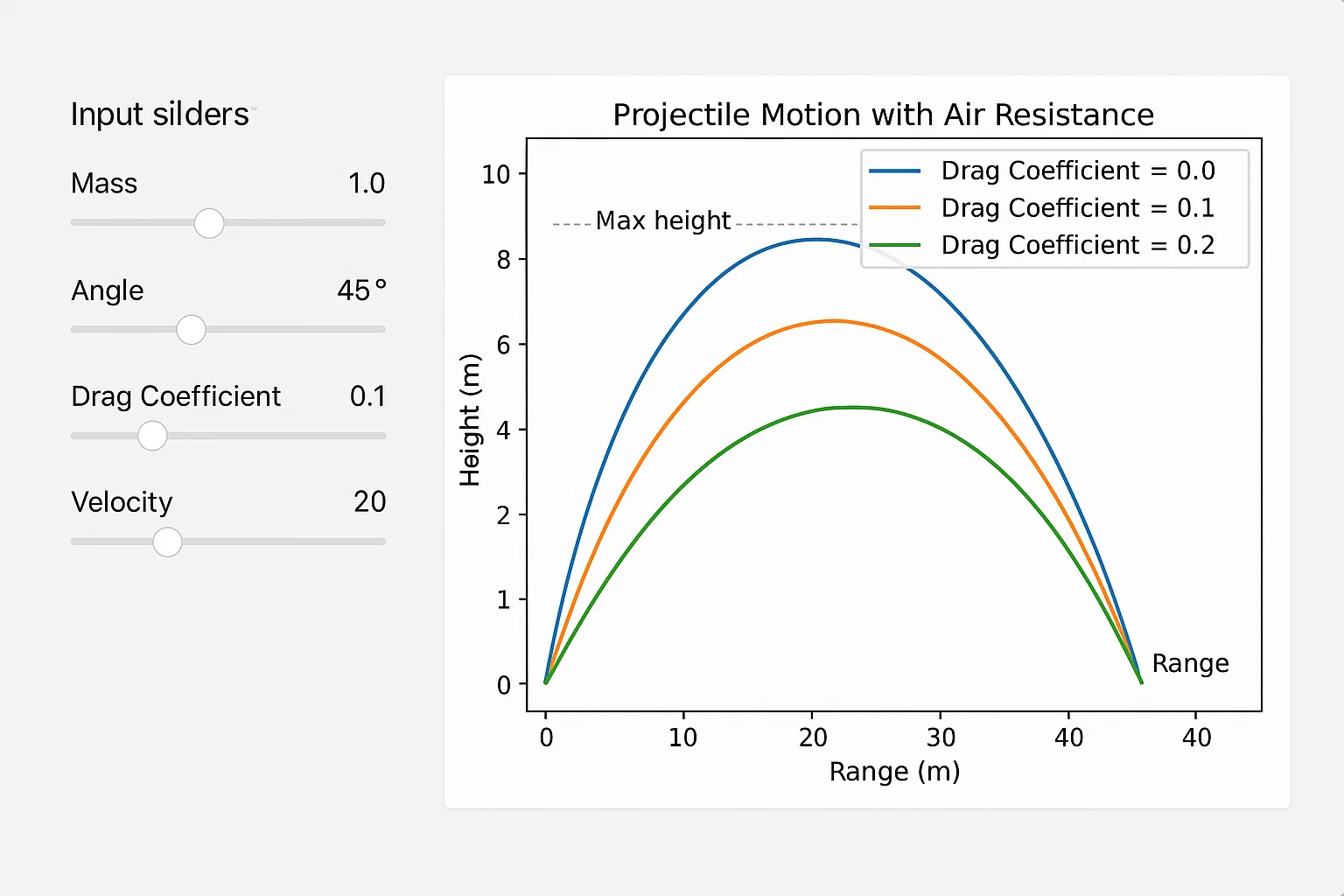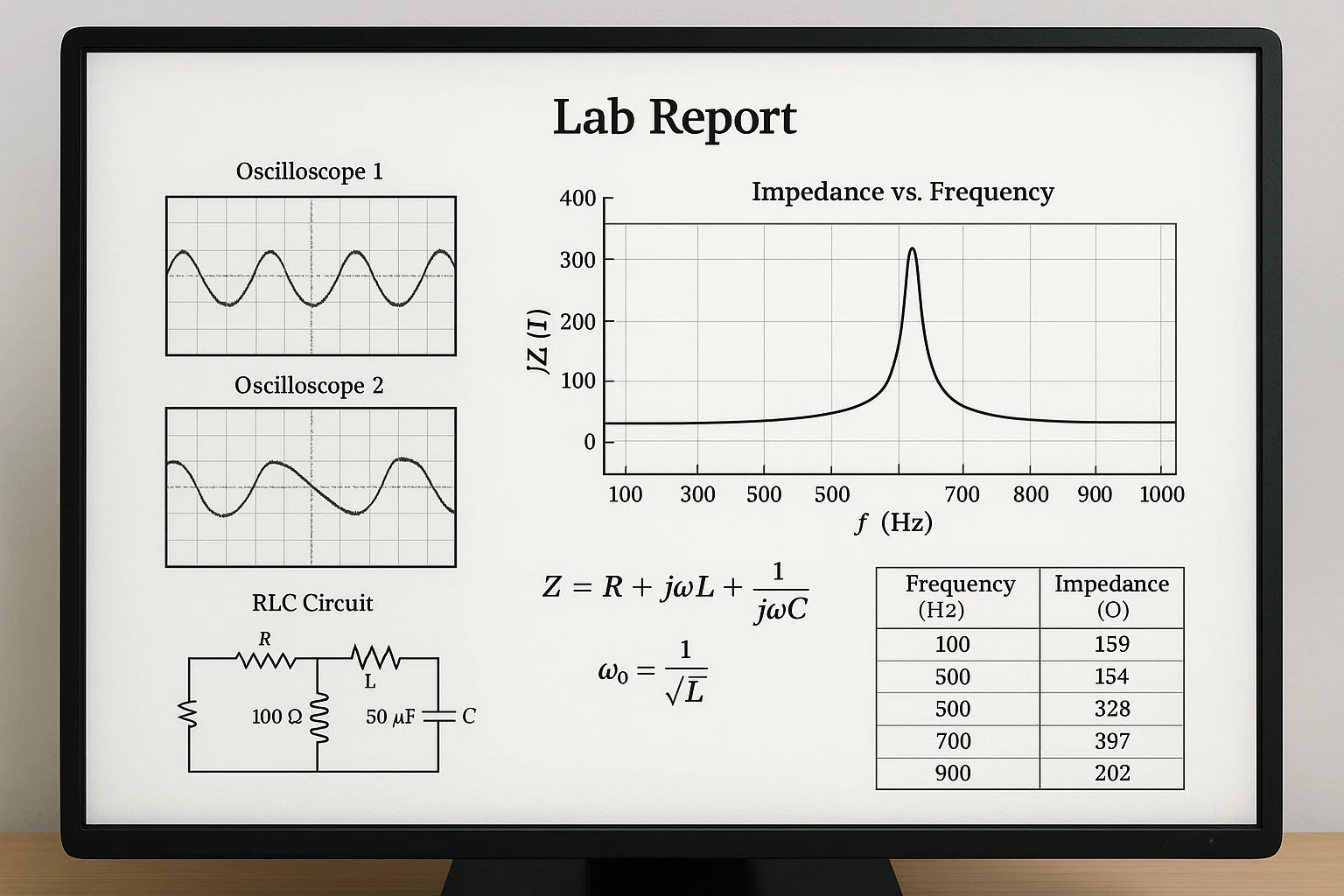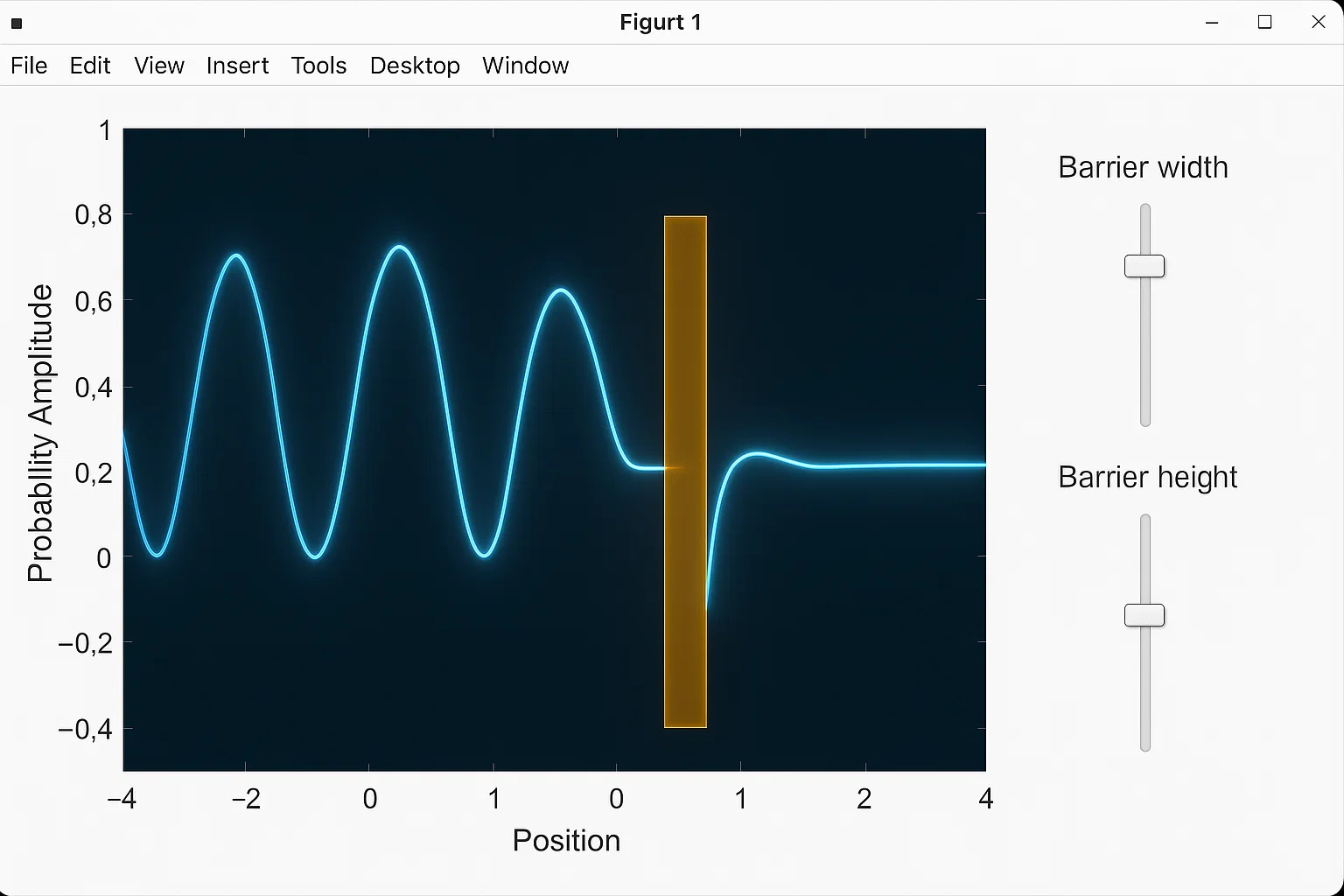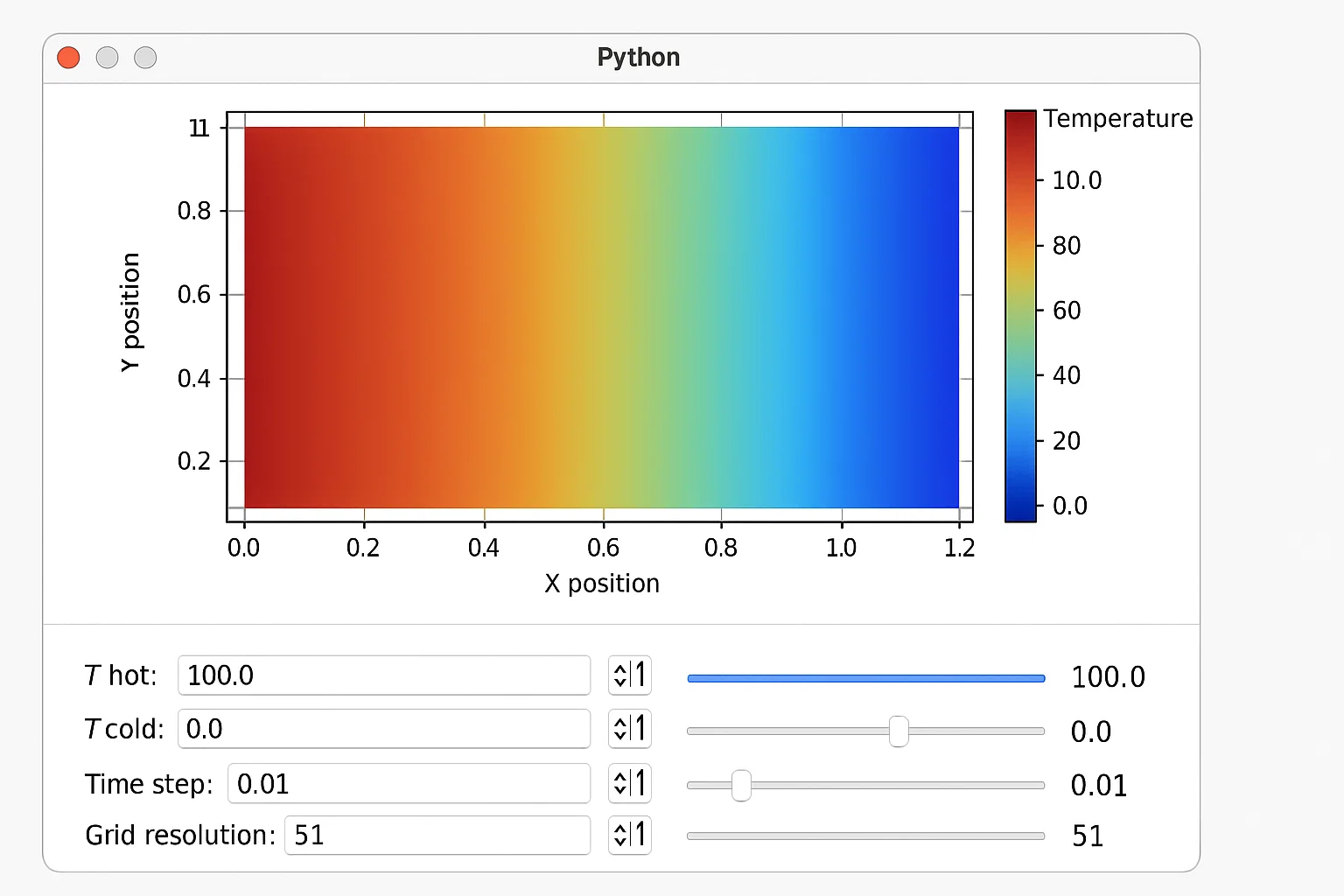Expert Assignment Solutions with 100% Guaranteed Success
Get Guaranteed success with our Top Notch Qualified Team ! Our Experts provide clear, step-by-step solutions and personalized tutoring to make sure you pass every course with good grades. We’re here for you 24/7, making sure you get desired results !
We Are The Most Trusted
Helping Students Ace Their Assignments & Exams with 100% Guaranteed Results
Featured Assignments

Simulation of Projectile Motion with Air Resistance Using Python
Computational PhysicsClient Requirements
The student wanted to deeply understand the dynamics of projectile motion, specifically incorporating real-world factors like drag force due to air resistance, rather than limiting themselves to the ideal vacuum-based models. They aimed to create a simulation using Python, visualizing the projectile’s path and calculating parameters like max height, time of flight, and range.
Challenges Faced
We ensured all physical variables—drag coefficient, initial velocity, angle of projection, mass, and cross-sectional area—were correctly modeled. However, we faced complications handling non-linear differential equations due to the drag force being velocity-dependent, which required a shift from basic kinematics to numerical integration methods like Euler or Runge-Kutta.
Our Solution
We implemented a Python-based simulation using matplotlib for visual plotting and used the Runge-Kutta method (4th order) to solve the system of ODEs. The user could input different parameters to see how the motion changed under varying conditions. A GUI was also optionally added using Tkinter to enhance usability.
Results Achieved
The final simulation effectively visualized different projectile paths under variable air resistance. The interface was smooth, and real-time graphs helped users understand the trajectory behaviors under changing physical conditions.
Client Review
I had an outstanding experience working with them. The simulation of projectile motion with air drag was not only functional but also highly interactive. Everything from theory application to Python code implementation was handled professionally, and the output really helped me grasp complex motion physics in a tangible way.

Investigating Resonance in RLC Circuits – Practical + Theoretical Report
Electrical PhysicsClient Requirements
The student needed to experimentally and theoretically analyze resonance in RLC circuits, aiming to link their practical lab readings with the theoretical model. The deliverables included a formal lab report, graphical analysis of frequency vs. impedance, and derivation of resonance conditions using phasor algebra.
Challenges Faced
We ensured the experimental data was valid and reproducible, but faced challenges aligning the theoretical impedance curves with real-world lab data due to resistor heating, parasitic inductance, and measurement delays. Integrating all components in a seamless analytical report with clear correlation to real physics laws required extensive verification.
Our Solution
We created a structured report broken down into: theory (including resonance equations and phasor analysis), experimental setup (breadboard + oscilloscope usage), data analysis (with graphs plotted in OriginLab and Python), and error analysis. We included real oscilloscope screenshots and conducted error propagation to compare the resonance frequency observed vs. calculated.
Results Achieved
A complete and academically strong report showcasing how theory aligns (and sometimes conflicts) with real-world systems. It demonstrated critical thinking and depth of analysis, which were key learning outcomes.
Client Review
This assignment exceeded my expectations. The report didn’t just fulfill the formal requirements, it actually explained what was going wrong in the lab. The analysis, use of graphs, and the connection to real-world factors made it a very strong and rewarding piece of work. I'm genuinely thankful for the level of detail put in.

Quantum Tunneling and Barrier Potential - MATLAB-Based Visualization Project
Quantum MechanicsClient Requirements
The student wanted to explore quantum tunneling, particularly how a particle with less energy than the barrier height could still penetrate through. They requested a visual MATLAB simulation for different potential barrier widths and heights, and a comparison of tunneling probability vs. classical expectations.
Challenges Faced
We ensured that Schrödinger’s time-independent equation was discretized correctly using the finite difference method. However, ensuring numerical stability and accuracy in the wavefunction normalization was tricky. Getting an intuitive plot of the wavefunction decaying within the barrier and re-emerging on the other side needed precise handling of boundary conditions.
Our Solution
We implemented the simulation in MATLAB using a tridiagonal matrix approach to solve the discretized Schrödinger equation. Tunneling probabilities were computed and plotted against varying energy levels. The interface allowed users to vary barrier width, height, and particle energy dynamically.
Results Achieved
A clean, functional simulation that beautifully illustrated the unintuitive nature of quantum mechanics. It also helped students conceptually see what textbooks often fail to clearly explain.
Client Review
The way they visualized quantum tunneling made the abstract concepts very concrete for me. I never imagined I’d see wavefunctions behaving like this outside of theory! The interface was user-friendly, and the simulation was perfectly accurate. Truly a top-notch experience with great academic depth.

Computational Thermodynamics – Predicting Temperature Distribution on a Metal Plate
Thermal Physics and SimulationClient Requirements
The student needed to simulate heat transfer across a 2D metallic plate, exploring how temperature propagates over time using Fourier’s Law. The purpose was to create a heatmap of the plate and demonstrate how initial and boundary conditions affect steady-state temperature distribution.
Challenges Faced
We ensured the finite difference time domain method was correctly implemented. But we encountered challenges handling computational boundary stability, especially for large grid sizes. The balance between computation speed and accuracy became a primary concern. The student also required the simulation to be run in real-time with variable time steps.
Our Solution
We developed the solver using Python and numpy, implemented explicit and implicit methods (Crank-Nicolson) for comparison, and provided an interface to adjust boundary conditions dynamically. Heatmaps were generated using matplotlib.pyplot.imshow, with animation to show evolution over time.
Results Achieved
A highly engaging visual simulation that clearly demonstrated the time-evolving behavior of temperature across a conductive plate. It provided strong insights into numerical methods, boundary influence, and physical laws.
Client Review
Their work on simulating heat transfer was nothing short of amazing. I was blown away by the clarity with which it showcased temperature evolution. The animation made it all so easy to interpret, and the underlying physics was implemented with precision. Great experience overall and learned a lot!
